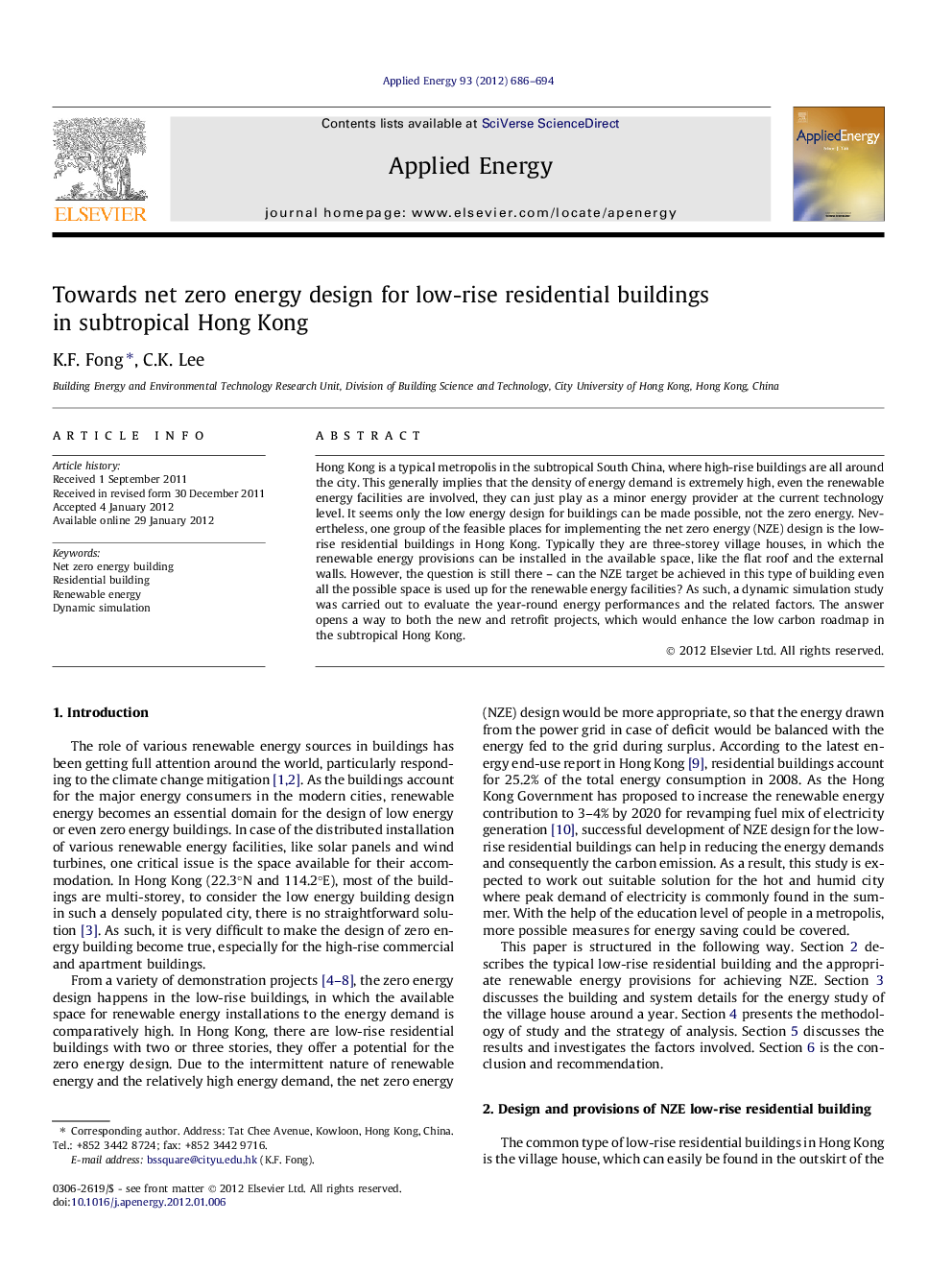| کد مقاله | کد نشریه | سال انتشار | مقاله انگلیسی | نسخه تمام متن |
|---|---|---|---|---|
| 243376 | 501927 | 2012 | 9 صفحه PDF | دانلود رایگان |

Hong Kong is a typical metropolis in the subtropical South China, where high-rise buildings are all around the city. This generally implies that the density of energy demand is extremely high, even the renewable energy facilities are involved, they can just play as a minor energy provider at the current technology level. It seems only the low energy design for buildings can be made possible, not the zero energy. Nevertheless, one group of the feasible places for implementing the net zero energy (NZE) design is the low-rise residential buildings in Hong Kong. Typically they are three-storey village houses, in which the renewable energy provisions can be installed in the available space, like the flat roof and the external walls. However, the question is still there – can the NZE target be achieved in this type of building even all the possible space is used up for the renewable energy facilities? As such, a dynamic simulation study was carried out to evaluate the year-round energy performances and the related factors. The answer opens a way to both the new and retrofit projects, which would enhance the low carbon roadmap in the subtropical Hong Kong.
► Net zero energy (NZE) low-rise residential building can be realized in Hong Kong.
► Solar energy is used as the primary source for both electricity and heat generation.
► The nominal efficiencies of PV panels should be above 13%, with good human behaviors.
► The building orientation has minimal effect to the year-round energy performance.
► The NZE design can be applied to both new and existing buildings for low carbon promotion.
Journal: Applied Energy - Volume 93, May 2012, Pages 686–694